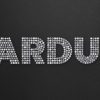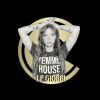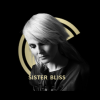-
 play_arrow
play_arrow
Clubalicious Clubalicious Radio
-
 play_arrow
play_arrow
London Calling Podcast Yana Bolder

By the time Ray Parker Jr. hit the top of the charts in 1984 with that instantly infectious slice of R&B/pop fluff called “Ghostbusters” — the Number One theme song from the hit comedy film of the same name — he had already enjoyed a long and very successful career in music: This was no one-hit wonder in action.
The Detroit native took up the guitar at a young age, and by the time he was in his early teens, he was already backing local groups. “When I was about 13, I used to go on tour with The Spinners,” he relates from his L.A.-area home/studio. “Then I worked regularly at a club called the Twenty Grand [with] so many Motown acts that performed there — Gladys Knight & The Pips, The Temptations, Smokey Robinson & The Miracles. I was part of the house band there and really learned a lot from that experience.”
It wasn’t long before young Parker was brought into Motown’s studios and became an in-demand session guitarist. “Really, the first person I started recording for was probably Marvin Gaye,” he says, “but my big break, recording-wise, came when [songwriter/producers] Holland-Dozier-Holland left Motown — they couldn’t take the Funk Brothers [the label’s top session players] with them, so Holland-Dozier-Holland had to get their own musicians, and luckily for me, I got to do a lot of their records. It was a great time for me. I was 15 years old and as happy as a clam.”
Parker’s world changed even more when he was drafted to play guitar in Stevie Wonder’s band for the Motown artist’s historic 1972 tour opening for the Rolling Stones. Subsequently, Parker played on two of Wonder’s biggest albums, Talking Book and Innervisions. “I owe Stevie so much,” Parker says admiringly. “He was the one who really gave me the idea of how to write songs — how to actually compose. Before that, I was just a guitar player. But he would listen to my ideas and help me twist them around, and the next thing I knew I was writing songs. When I left his band, I changed from being a guitar player to writing songs and putting together a band and still being a guitar player.”
Parker got plenty of work in L.A., recording with the likes of Barry White, Stanley Turrentine, Tina Turner, Boz Scaggs, Herbie Hancock, Lee Ritenour and many, many others, and in 1977, he started his own group, Raydio, who enjoyed several big hits, including “Jack and Jill,” “You Can’t Change That” and “A Woman Needs Love (Just Like You Do).” As the ’70s progressed, too, Parker got more and more interested in recording.
“I guess I picked up engineering originally because in the old days at ABC-Dunhill, I’d go in and rent studio time and it would be late at night and I’d get a discount deal and the engineer would be falling asleep at three in the morning…so I learned what I needed to know to get my music recorded,” he says with a laugh. “Pretty early on, too, I had a studio built in my home, and I did a lot of the Raydio stuff there. Lamont Dozier’s brother, Reggie Dozier, was an engineer and he came over to my house and helped me. I bought a mixing console — an MCI JH-16 board, with 16 faders — and me and him got some soldering guns and just wired everything together ourselves. Actually, we wired it out of phase. I remember I got to Bernie Grundman Mastering and he said, ‘Hey, you’ve got eight of the tracks out of phase!’ But it turned out okay. ‘Jack and Jill’ came out, and we sold a million-eight!”
By 1979-80, Parker and an engineer friend named Steve Halquist had opened a commercial facility, Ameraycan Studios, and this became Parker’s base of operations for many years, though he also kept a home studio up and working. “I always liked working at home alone,” he says today. “Besides, once [Ameraycan] got rolling, I couldn’t always get in there myself!” In the early ’80s, as well, Parker left Raydio behind and started recording under his own name exclusively, often playing most of the instruments on his records. He also wrote and produced hits for outside artists such as New Edition, Diana Ross, Deniece Williams and Cheryl Lynn during this period. Parker co-owned Ameraycan until 2000.
And then came “Ghostbusters.” It was an old friend named Gary LeMel (now head of Warner Bros. Music) who suggested Parker try his hand at writing a song for the film. “Gary said, ‘They’ve had all these different musicians writing songs and they spent a fortune, and they don’t even have a song with the word “Ghostbusters” in it! So will you take a look at this film and write a song?’ And he said, ‘Oh, and by the way, I need it in two days,’” he says, laughing. “The film was just about to come out. I immediately liked the film, so I agreed. But then the problem was, how do you put the word in a song? I wrote the music pretty fast, but I was struggling with the words. Then, about three hours before I had to turn in the song, I was dead, half-asleep — it’s about 4:30 in the morning — and a commercial comes on — I think it was a drain company — and they flash this phone number, and it reminded me of a spot in the movie where the Ghostbusters have their packs on and they show a phone number, like they’re advertising. And that was it! I came up with the idea of ‘Who you gonna call?’ And then I thought, there’s no way you’re going to sing ‘Ghostbusters’ in a song and make it sound good, so instead of singing it, I’d have a crowd answer me.”
Classic Tracks: Warren Zevon’s “Werewolves of London”
Time was of the essence, and he didn’t have enough time to call a band, so Parker ended up playing nearly all the instruments himself and engineered the track (with some assistance from studio partner Halquist) working at Ameraycan, which by that point had an MCI 24-input console and MCI multitracks, and plenty of good mics, including vintage Neumanns and AKGs. “I really put it together almost like you’d do a quick demo,” he says. “I laid down the guitar part first because that’s still the instrument I play the best, and then I just kept adding things. But there really isn’t as much on there as you might think. It sounds big, but it’s really just one rhythm guitar part, one lead guitar part, a horn keyboard [synth] part, one bass part, one drum part and some synthesizer overdubs. Then I overdubbed the sax later. The main synth was a Korg Poly 61, a relatively cheap little thing. I used a Jupiter 6 on the bass line because I couldn’t afford a Jupiter 8! Nothing is doubled — it’s just single lines that really fit together well. It was one of those days when everything came together — bang, bang, bang — and it didn’t seem like I could do anything wrong. The bass part sounded great, the drums were big. Everything sounded fat.”
And who was the lively chorus shouting out “Ghostbusters!” with such gusto? Parker laughs: “I was 28 years old and I was dating this young girl — 17 years old — and I told her my idea and she quickly got a bunch of her high school friends to come by and yell on it. They were genuinely excited to be in there recording, and that was exactly what the track needed.”
Parker says that his original version of the song was just one minute and 15 seconds long — riff, verse, chorus — and was intended to simply run at the beginning of the film, but director Ivan Reitman liked it so much, he encouraged Parker to go back and turn it into a full song for the soundtrack album, which he did by renting a second 24-track, looping sections of the song, creating three verses and choruses, and then adding a short breakdown section in the middle. (Later, too, he stretched it to six minutes for the all-important disco mix!)
Though the record shot to the top of the charts and became a true cornerstone of his career, Parker could not have predicted the long life the song has had — as a Halloween classic. “I hear it’s one of the top Halloween songs of all-time now,” he says. “It’s been on so many [Halloween] collections. I love it!”
“Ghostbusters” also has some notoriety attached to it: Huey Lewis sued Parker claiming that the song had been lifted from his own “I Want a New Drug.” The pair settled out of court many years ago and Parker has retained full ownership of the song. Parker continues to write and record and tour (and makes a point of always playing “Ghostbusters” at his concerts). His latest album, recorded entirely at his Pro Tools — based home studio, is a fine effort called I’m Free.
This article was first posted in August, 2006.
Written by: Admin
Similar posts
Recent Posts
- 🎶 New Music: JID, OneRepublic, Morgan Wallen, Post Malone, MarkCutz, Kidd Spin + More!
- Classic Tracks: The Fireballs’ “Sugar Shack”
- Classic Tracks: Arlo Guthrie’s “City of New Orleans”
- Classic Track: k.d. lang’s “Constant Craving”
- Classic Tracks: Waylon Jennings’ “Are You Sure Hank Done It This Way”
Recent Comments
No comments to show.Featured post

Latest posts

🎶 New Music: JID, OneRepublic, Morgan Wallen, Post Malone, MarkCutz, Kidd Spin + More!

Classic Tracks: The Fireballs’ “Sugar Shack”

Classic Tracks: Arlo Guthrie’s “City of New Orleans”

Classic Track: k.d. lang’s “Constant Craving”

Classic Tracks: Waylon Jennings’ “Are You Sure Hank Done It This Way”
Current show
Upcoming shows

STARDUST
Presented by Bergwall
17:00 - 19:00
Femme House
Lp giobbi
19:00 - 20:00
In Session
Sister Bliss
20:00 - 21:00
It’s A London Thing
Ginger Tim
21:00 - 00:00
It’s A London Thing
Ginger Tim
00:00 - 02:00Chart
Powered by Dee jay promotions visit us








 Invalid license, for more info click here
Invalid license, for more info click here